With an abundance of wildlife, two UNESCO World Heritage Sites and a stable government, sparsely populated Botswana is a great country to visit if you’re looking to go on safari for the first time.
So if you’re thinking of heading to Botswana to see the spectacular wildlife, here are some of my top tips…
Climate
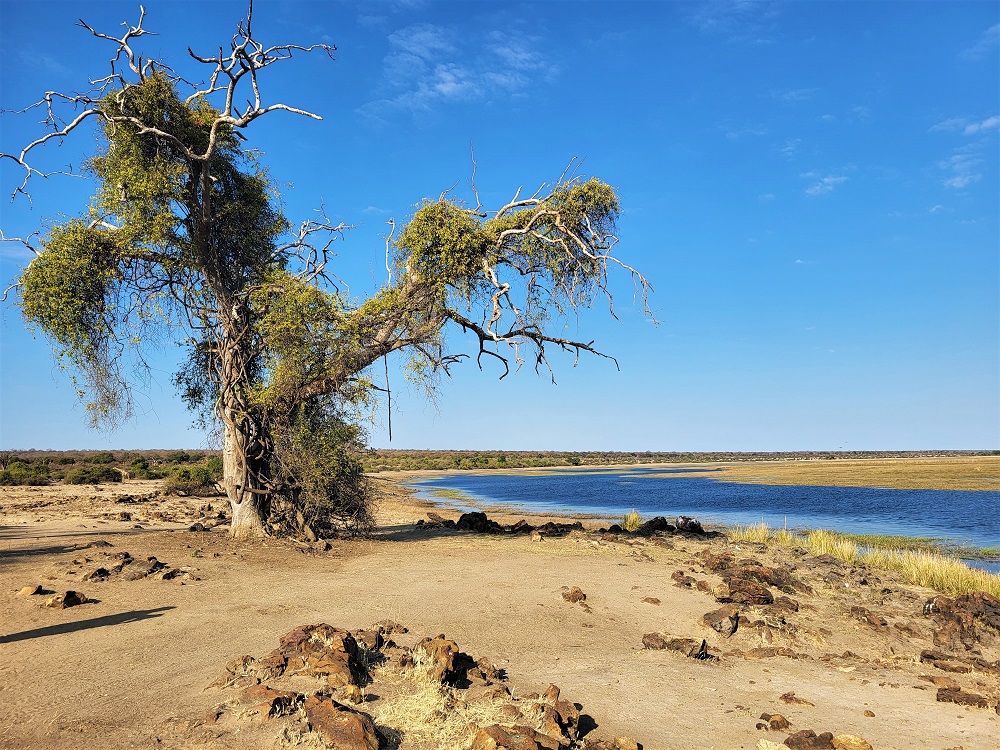
Don’t be fooled into thinking that it will be baking hot in Botswana. You may be in Africa, but if you travel during the winter months (June, July, August) it can get very cold indeed.
I completely misjudged the weather when I went and ended up buying a thick winter coat, thermal leggins and multiple pairs of socks.
The climate in Botswana is seasonal, which means the landscape can look vastly different depending on when you go.
You’ll find lush greenery in March at the end of the rainy season (November to March), while dry October is likely to look very barren indeed.
When you go can also affect the type of wildlife you see. You’re more likely to spot mammals in the dry season (between May and October) as the animals congregate around the diminishing water pools, while the birdlife is at its most prolific from November to March.
Money matters
Botswana’s currency is the pula and the country’s colourful notes and coins showcase its fabulous wildlife.
I took US dollars to Botswana, which I was able to exchange easily into pula in the many currency exchanges in Maun. Currently, you get around 16 pula to the British pound and 12 pula to the US dollar.
While you’ll need to use cash in hamlets and villages (small bills are best as they often have no change), I had no problem using my debit card in the tourist-friendly towns such as Maun and Kasane.
Meet the wildlife
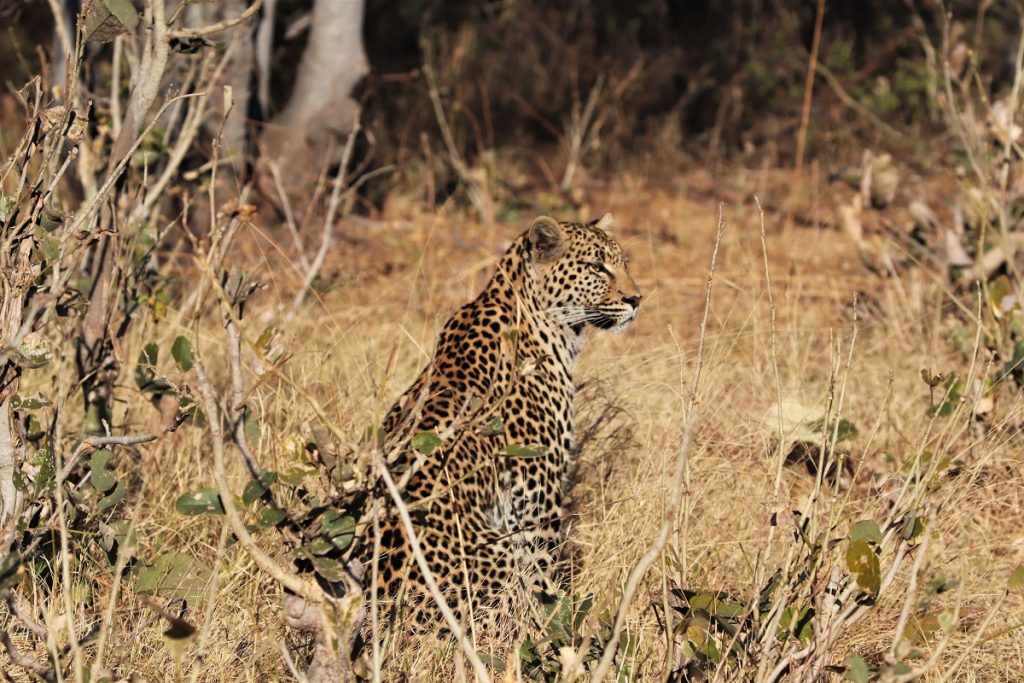
If you’re looking for wildlife, you’ve come to the right country. For Botswana is home to an incredible array of animals – elephants, giraffes, lions, zebras, hippos, buffalo, impala, kudu, leopards and more abound.

The birdlife is also superb. Botswana boasts some 600 different species of bird and during my two weeks in the country, we saw more than 100 of them.
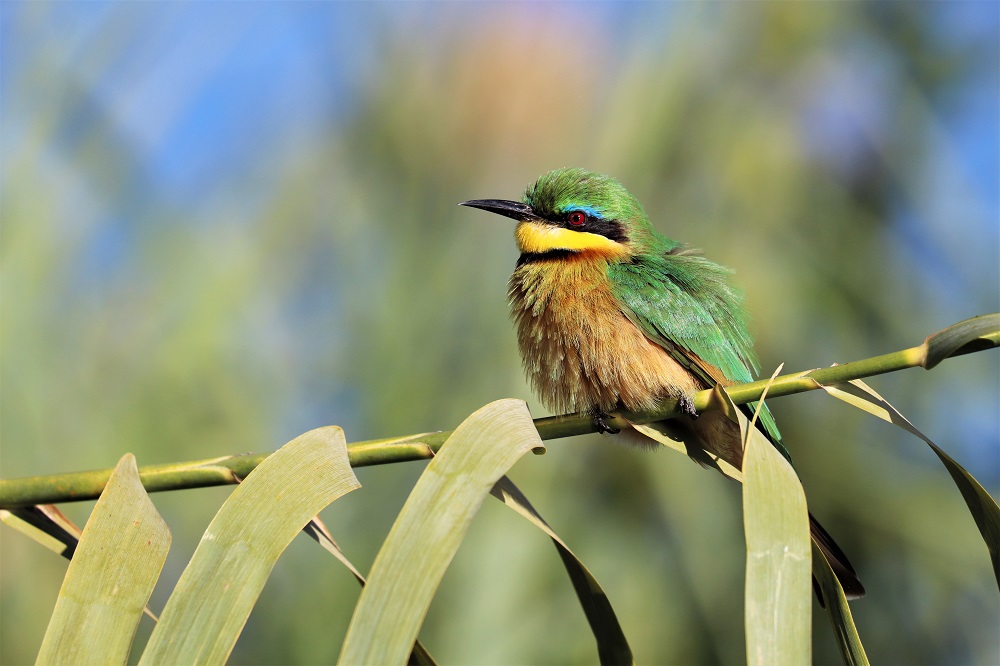
We spotted eagles, kingfishers, bee-eaters (above), starlings and hornbills galore, as well as the country’s current national bird, the kori bustard, and the sublime lilac-breasted roller (below).
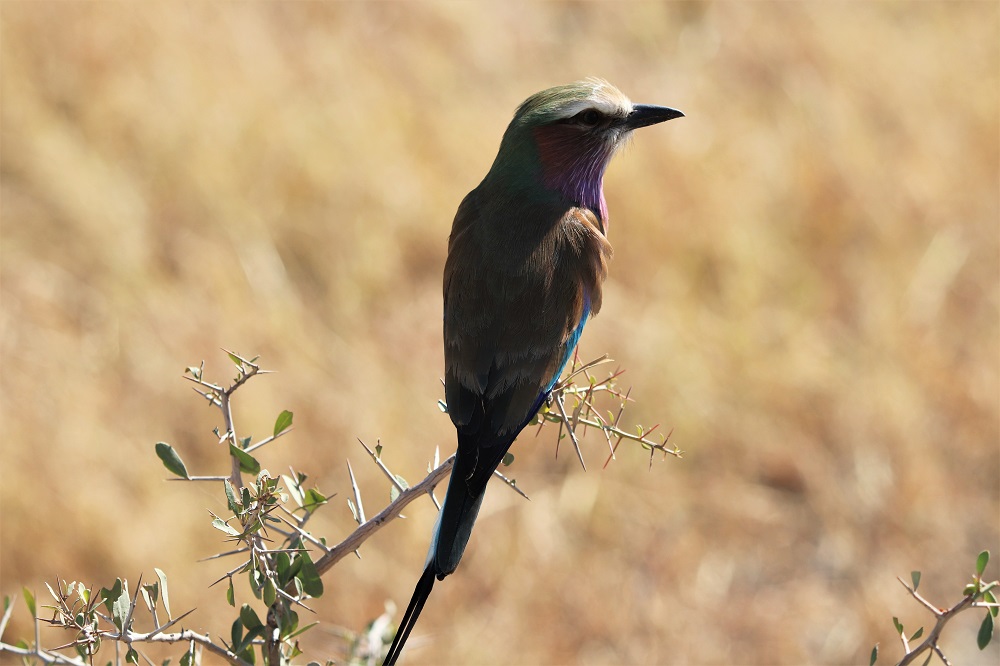
What surprised me most about Botswana was the abundance of wildlife – everywhere you look there’s an elephant, a giraffe, a donkey, a starling or a hornbill.
I was also surprised by how free the animals are to roam. You’ll be driving down a main road and suddenly have to stop to let a herd of elephants cross (below).

Even the livestock wander around freely, with cows, donkeys and goats ambling around the towns and countryside.
If you’re keen to see rhinos, you’ll need to visit Khama Rhino Santuary, because due to poaching, it’s the only part of Botswana where the creatures currently live.
Going on safari
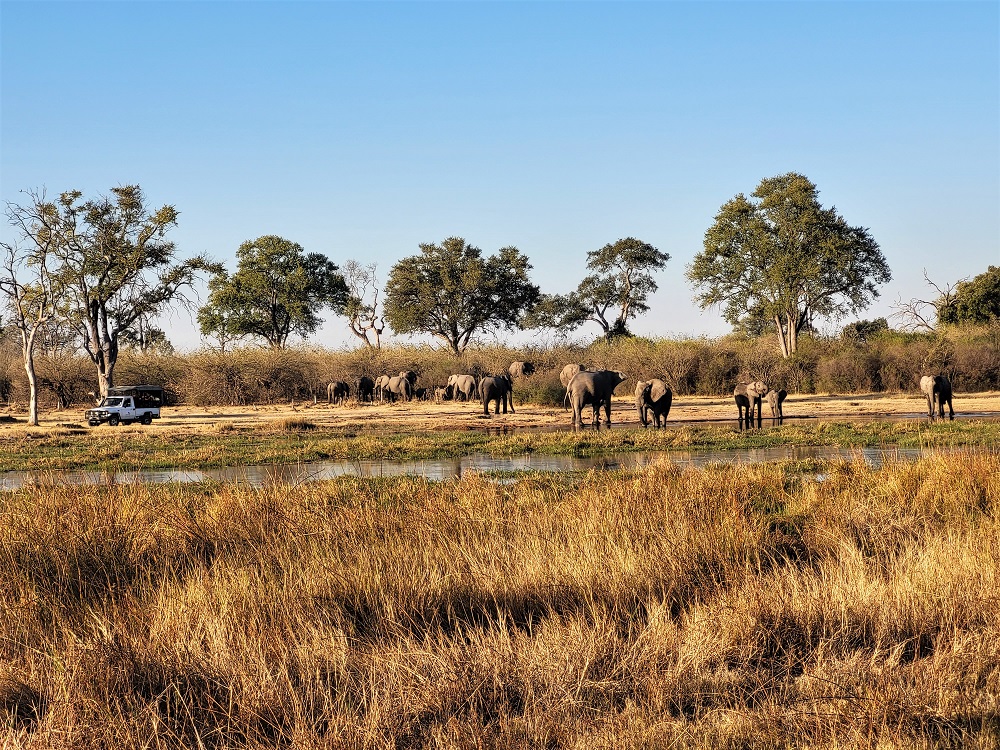
There are numerous national parks and game reserves across Botswana where you can go on safari.
National parks are owned by the government, while the game reserves are run by the local community.
Game drives typically take place first thing in the morning (expect to set off around 6.30am to 7am) and at dusk (between 4pm and 6.30pm) as this is when the wildlife is most active.
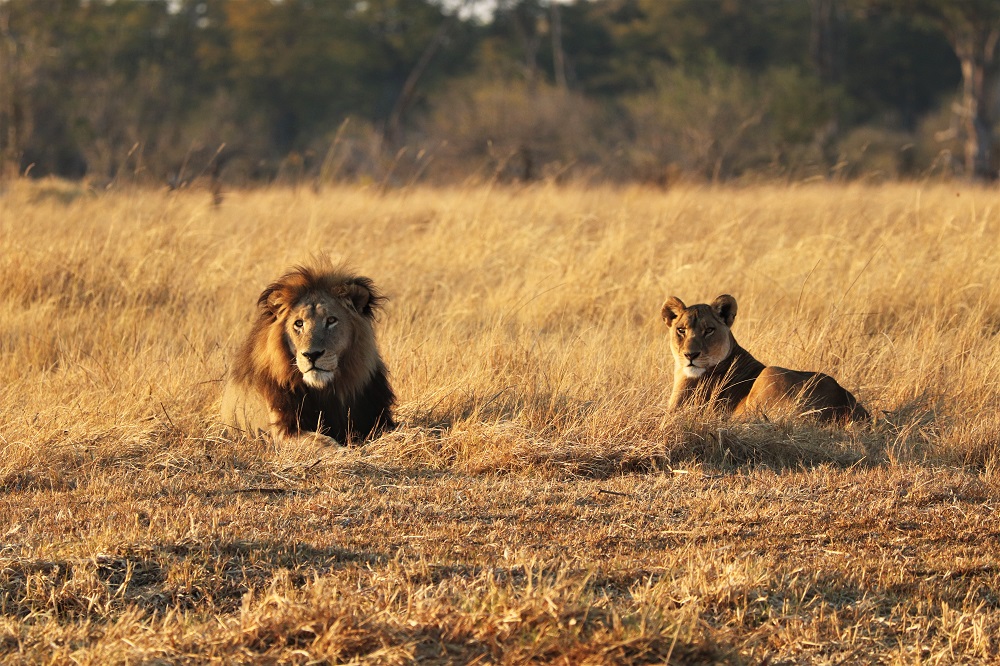
It can be very cold in the safari vehicle first thing in the morning, so a warm coat is essential.
You can’t walk around the national parks and game reserves because, unsurprisingly, it’s too dangerous, so you have to stay in your vehicle the whole time.
The only places you’re allowed out are your campsite and the designated stretching points.
What to expect if you’re wild camping
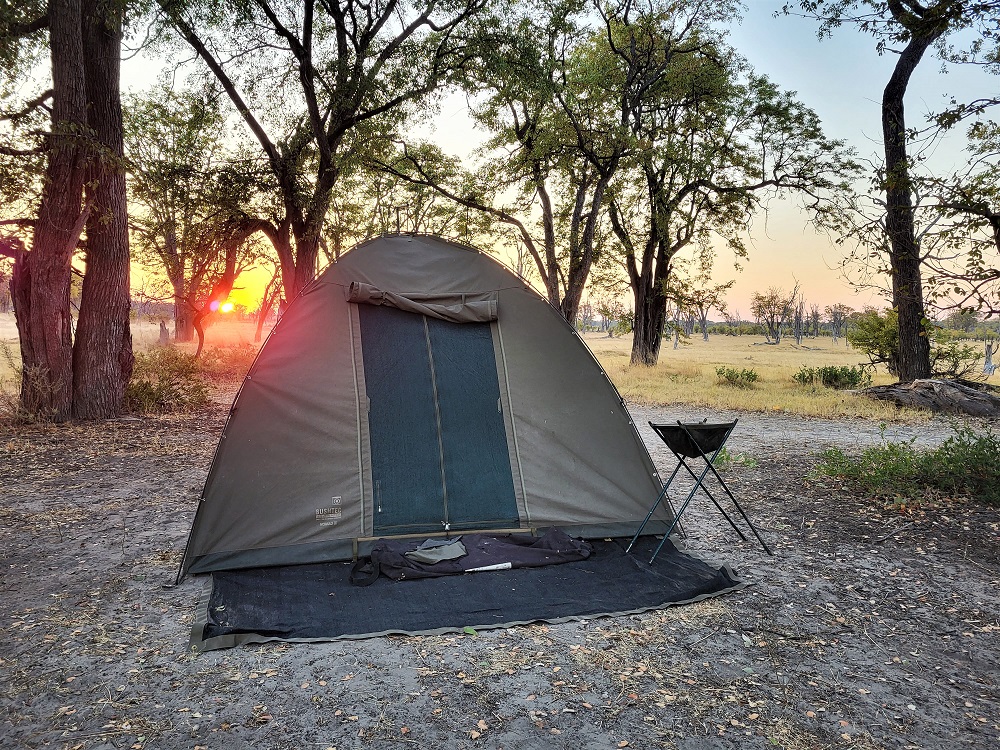
If you’re wild camping in one of the national parks or game reserves, you’ll find yourself in a tent in a campsite in the middle of the park or reserve.
There are no fences around the campsite, so the animals are free to come and go. If an animal does walk through the camp, you’ll need to stay in your tent until it’s moved on.
On our first night wild camping, an elephant walked through our campsite while one of my campmates was in the shower.
Botswana’s game reserves and national parks are remote, which means there’s no phone signal or internet.
Facilities are also limited. I only came across one tuck shop (cash only) during my seven days in the parks, so you’ll need to stock up on water and supplies before you go.
While there are a few public toilets, they don’t always have toilet paper, soap or even running water.
Travelling around
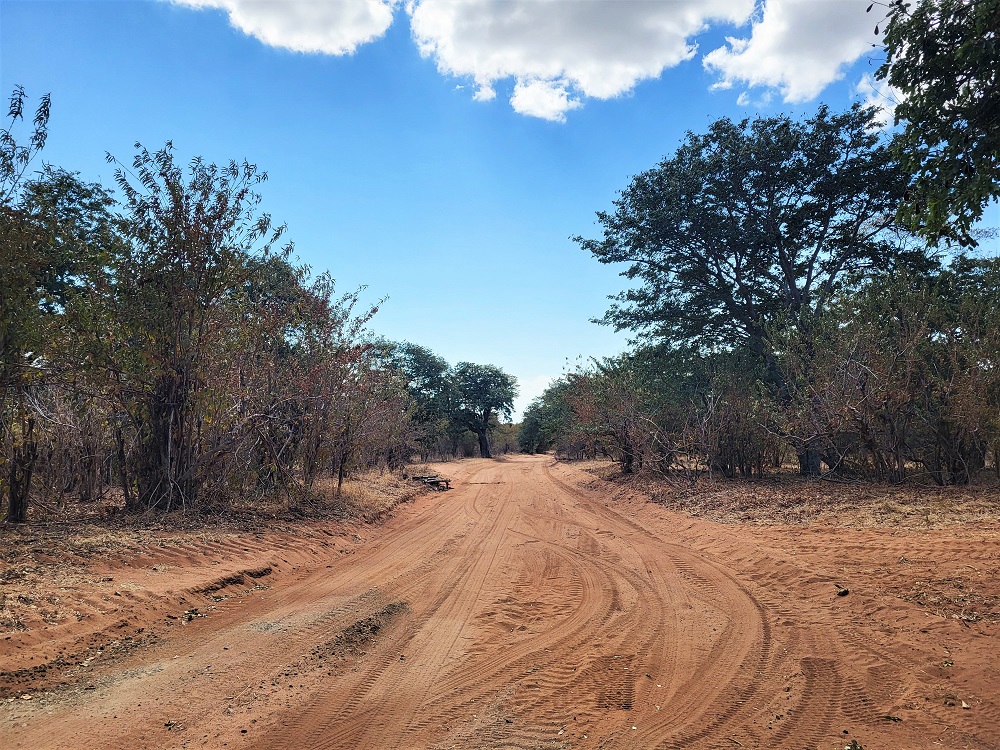
The infrastructure in Botswana is limited to say the least. The roads in the towns are fine, but expect to have to step out into the road to cross them as you would in Italy or Vietnam.
If you’re driving from town to town and are lucky, the road will be tarmacked. But there’s a good chance you’ll find yourself on a dusty, bumpy road for hours.
There are long distances between many of the towns and parks, which means travelling around the country can be an uncomfortable experience.
Service stations are also practically non-existent. So if nature calls, you’ll need to look for a reasonably sized bush by the side of the road.
What to wear
If you’re on safari, it’s best to stick to neutral shades and avoid bright colours.
While long, loose layers will help keep the pesky mosquitoes at bay (having said that, I still got bitten through my clothing).
It can be very cold in the safari vehicle first thing, so a warm, windproof coat and socks are essential (my toes were freezing).
And if you’re camping, don’t forget to pack your thermals as it can get chilly during the winter nights.
What to pack

Suntan lotion, a hat and insect repellant are a must, as is a head torch if you’re camping (it’ll be much more useful than a hand-held torch).
Binoculars should be on your packing list if you’re keen to do some bird watching.
While if you’re planning to photograph the wildlife, a long 300mm lens will prove invaluable. I took a 300mm lens for my DSLR and it was the perfect accompaniment to my phone.
Botswana uses the South African D-type plug, so a D-type plug converter is handy. Having said that, I managed to get by without one as the hotels I stayed in also had one British G-type socket in each room.
Be aware, there’s no electricity in the campsites. So if you’re wild camping, take some spare camera batteries and a decent powerbank to make sure you stay fully charged during your trip.
Gastronomic matters
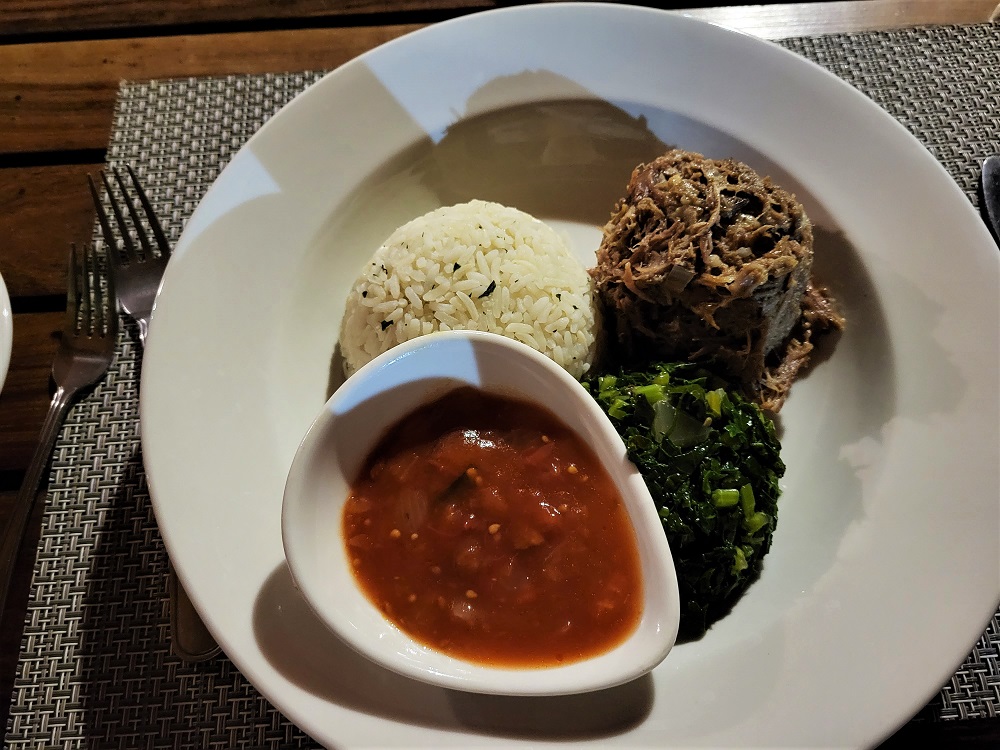
Beef is one of Botswana’s biggest exports, so you can expect to see a lot of beef on the menu. Chicken is also popular, as is goat.
I had a traditional dish of seswaa, also known as pounded goat (above, think a goat version of pulled pork), on my first night in the country.
Another local speciality to look out for is pap, which is a maize porridge (it’s a bit like a thick savoury semolina pudding).
Have your say
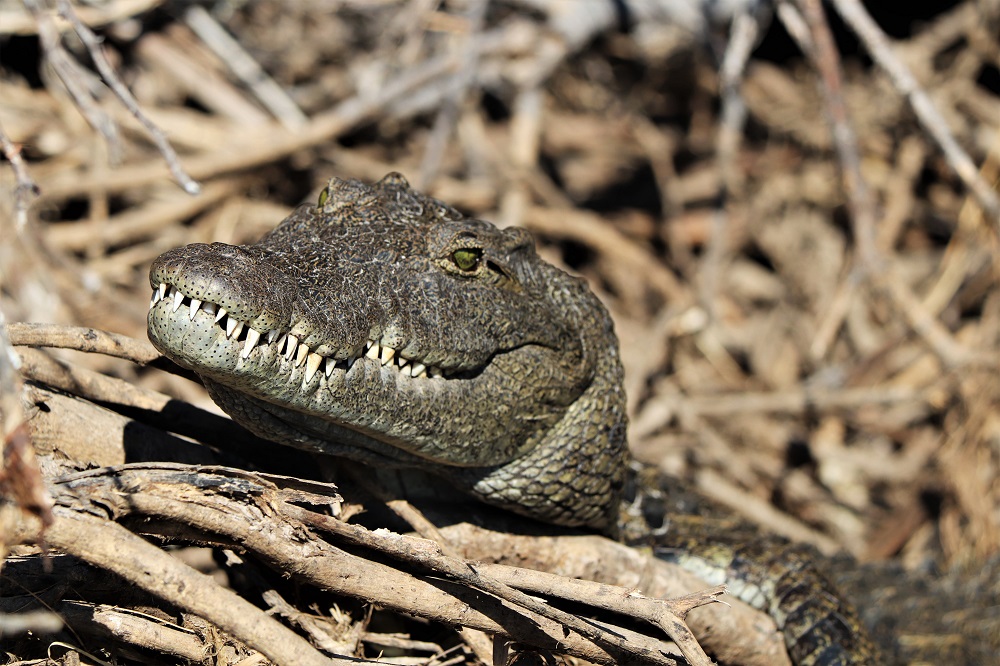
Have you been to Botswana? If so, what did you think? I’d love to hear your thoughts. Share your thoughts, tips and questions in the comments below.






